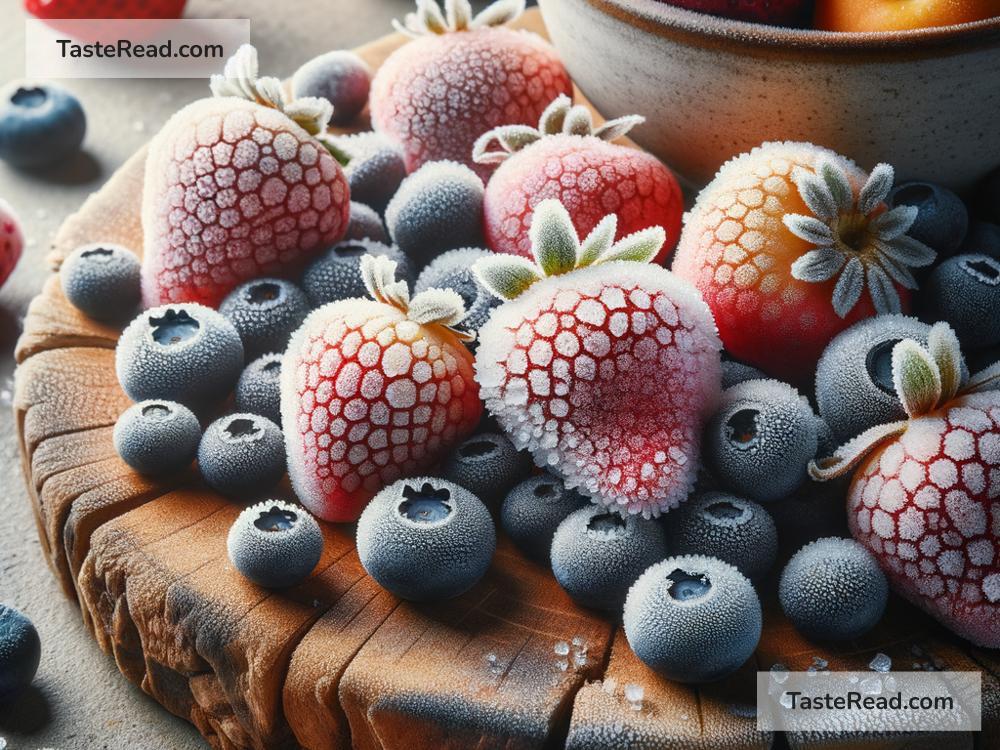How Freezing Affects Fruit Texture and Taste
Freezing is a great way to preserve fruits for longer periods of time. It allows us to enjoy fruits that are out of season, reduce food waste, and save money. However, freezing changes the texture and taste of fruits in ways that are interesting to explore. If you’ve ever wondered why your frozen strawberries or peaches feel mushy or taste slightly different when thawed, this article will explain why.
What Happens When Fruits Are Frozen
When fruits are frozen, the water inside them turns into ice. Since fruits are made up of a high percentage of water (usually between 80% to 95%), freezing has a big impact on their structure. Ice crystals form as the temperature drops, and these crystals grow larger the longer the fruit remains frozen. As we’ll discuss, the ice crystals are responsible for many of the changes in texture and taste.
Freezing also slows down or stops the growth of bacteria and molds, which keeps fruit from spoiling. It can preserve the nutrients in fruits and even retain most of their original flavors if done correctly. However, the freezing process itself causes certain physical and chemical changes.
Texture: Why Frozen Fruits Become Soft or Mushy
One of the biggest changes people notice in frozen fruits is in their texture. Fresh fruit often feels firm, crisp, or juicy, but frozen fruits can feel soft, mushy, or slimy after thawing. Why does this happen?
The answer lies in the structure of the fruit’s cells. Fruits are made up of tiny compartments called cells, which are surrounded by thin walls. Inside these cells, there is water and other substances like sugar and nutrients. When you freeze fruit, the water inside the cells turns into ice and expands. This expansion causes the cell walls to stretch and sometimes break.
When the fruit is thawed, the ice melts back into water, leaving the damaged cell walls behind. Without intact cell walls, fruits lose their original firmness. This is why frozen strawberries or raspberries don’t have the same bite as fresh ones—they’ve lost their cellular structure. Fruits with higher water content, like melons and berries, tend to experience more dramatic texture changes than fruits with lower water content, such as bananas.
Taste: Does Freezing Affect Flavor?
Freezing can also slightly affect the taste of fruits, but this change is usually less noticeable than the change in texture. The flavor of fruit comes from natural sugars, acids, and aromatic compounds that give each fruit its unique taste. These compounds are generally stable during freezing, meaning the fruit’s sweetness and tartness don’t vanish completely.
However, some subtle changes occur. For example, freezing can dull the vibrant flavors of fresh fruit, making them taste less bright or fresh when thawed. This can happen because the freezing process may cause minor chemical reactions that alter the fruit’s aromatic compounds. Additionally, if frozen fruit is stored for too long or under improper conditions, freezer burn can develop. Freezer burn occurs when moisture is lost from the fruit, leading to dry spots that taste bland.
Certain fruits retain their original flavors better than others. For instance, berries often freeze well and maintain their natural sweetness. On the other hand, delicate fruits like peaches and watermelon may lose some of their fresh taste due to their higher water content and softer cell structure.
How to Freeze Fruit to Minimize Changes
The way you freeze fruit can make a big difference in how well it holds up in terms of texture and taste. By following a few simple steps, you can reduce the negative effects of freezing:
-
Freeze Quickly: Rapid freezing helps prevent large ice crystals from forming, which reduces damage to cell walls. Use a freezer with a consistent low temperature.
-
Prepare Fruit Properly: Wash, dry, peel, and slice fruit before freezing if needed. For fruits like apples or peaches, consider blanching them briefly in hot water to reduce browning and preserve flavor.
-
Use Airtight Containers: Store fruit in airtight plastic bags or containers to prevent exposure to air, which can cause freezer burn and flavor loss.
-
Avoid Overly Long Storage: Frozen fruit is best used within 6–12 months. The longer it’s stored, the greater the chances of changes in taste and texture.
-
Thaw Carefully: Allow fruit to thaw slowly in the refrigerator rather than at room temperature to avoid further breaking down cell structures.
When to Use Frozen Fruits
Although frozen fruits may lose some of their texture and taste, they are still incredibly versatile and useful. Thawed fruits work well in smoothies, baked goods, sauces, and desserts. Since texture is less noticeable in recipes like pies and jams, frozen fruit is a great option.
If you want to enjoy fruits in their raw form, eating them slightly icy rather than completely thawed may make the texture changes less obvious.
Conclusion
Freezing fruit is an amazing way to keep it fresh for months, but it does cause changes to its texture and taste. The formation of ice crystals damages cell walls, leading to softer and mushier fruit after thawing. While freezing doesn’t drastically change the flavor, subtle differences can occur, especially if the fruit is stored improperly.
Understanding how freezing affects fruit lets us make smarter choices about how we store, use, and enjoy our favorite fruits. Whether you’re blending up a smoothie or baking a pie, frozen fruit can still bring sweetness and nutrition to your life!


